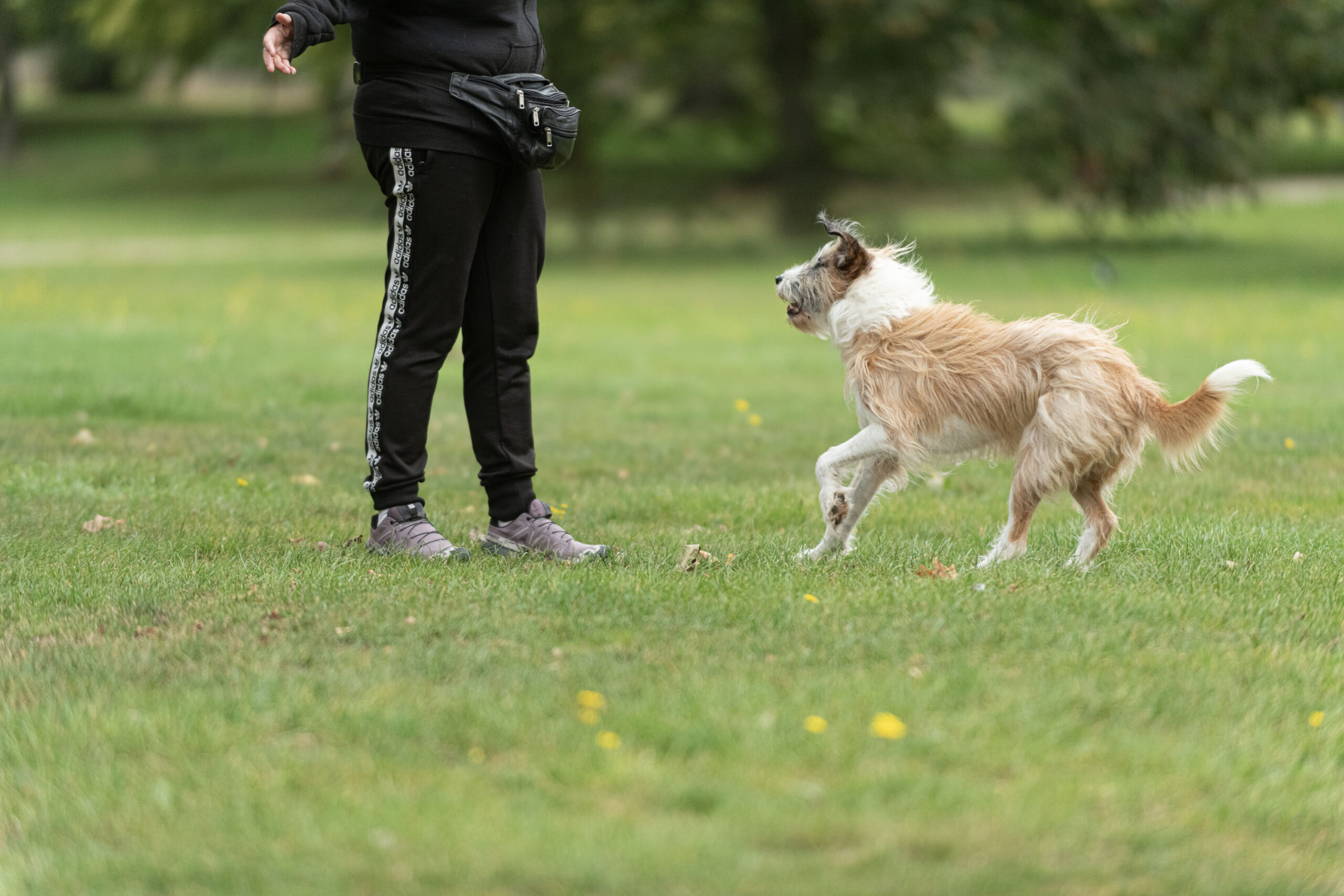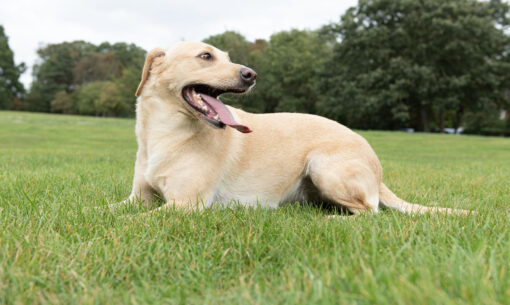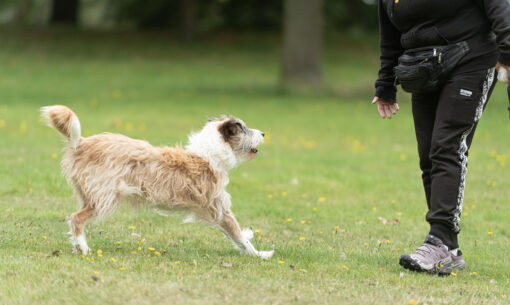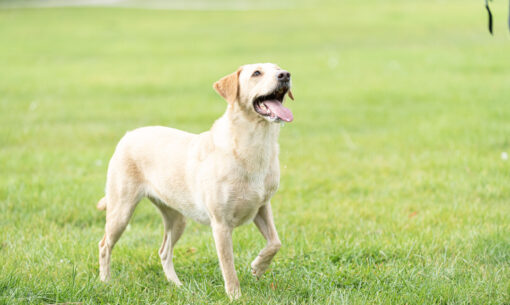Dog training: treats, tips and tricks for a happy pup
Whether you have recently welcomed the pitter patter of tiny paws or are a seasoned dog parent, making sure your dog is a happy well socialised pup, is likely to feature near the top of the ‘to-do’ list. Training your bundle of fun is a great opportunity to spend quality time together and armed with a favourite toy or some tasty dog training treats, you’re all set.

What do I need to train my dog?
Positive reinforcement or reward-based training is the name of the game. Every time your pup accomplishes a task, make sure that they know they have done well. For some that may mean lots of fuss, or a game of fetch after a training session. But for food-orientated canine companions (Labrador anyone?) some dog training treats are sure to tick the box.
The best dog treats for training
Kibble – some of their normal kibble may be enough of a motivator, but more discerning pups may look for something tastier…
Dog training treats – offering a tasty morsel that’s different to the mealtime offering adds appeal. Tiny Friends Farm Danny Dog and Dolly Dog treats are perfect, and just the right size to fit in your pocket.
Cooked lean meat – cooked meat, such as chicken, is another option when your pup needs a high value reward – maybe they have accomplished a tricky command. Remember to follow the same food hygiene rules as for us humans to keep your pooch safe.
Peanut butter – a messier option but dog-safe peanut butter is often a winner. Make sure it’s free from artificial sweeteners like xylitol, as this is toxic to dogs.
Why not try a Danny Dog versus Dolly Dog taste test to see which they prefer? Put a different treat in each hand and close your hand to make a fist. Or you can try hiding treats under cups and wait for them to sniff out their favourite.
Top tip: avoid high fat treats like sausages to avoid digestive upset
Dog training tips
With a pocket of tasty dog training treats, and some dedicated time to spend with your pup, you’re all set. Remember to:
- Keep training sessions short – five minutes is enough to begin with
- Pick a time when both you and your pup are in the right frame of mind
- Choose a quiet spot away from distractions
- Be patient
- Use lots of positive reinforcement – reward your pup with fuss or a tasty puppy training treat
And last but not least, have fun!

What are the best puppy training treats?
The best puppy training treats are rich in natural ingredients. Tiny Friends Farm Danny Dog and Dolly Dog are available in a range of flavours, from tasty chicken to irresistibly peanut butter. Why not mix it up to keep your pup motivated? How about Danny Dog Doggy Donuts with chicken for starters, and Dolly Dog Crunchy Cookies with peanut butter to add variety. All Tiny Friends Farm dog treats are just right to pop in your pocket with minimal mess. You can check out the full range here
How should I start socialising my puppy?
One of the first and most important steps in training your puppy, is getting them out and about and exposing them to the sights and sounds of daily life. Up to around 13 weeks of age is the key time for socialising. Socialisation can, and should, continue beyond this time but it is important not to miss this crucial window of opportunity.
It is important that your pup does not feel overwhelmed. To start with, it may be necessary to carry your pup in your arms, especially if their vaccine course is not yet complete. Think about exposing your pal to as many sights, sounds and new situations as you can think of, such as
- Fireworks
- Traffic noise
- Unfamiliar people
- Children crying
- Car travel
- Thunder
And that’s just for starters.
Of course, it’s important to take things at your pup’s pace and make new experiences positive – why not have some dog training treats at the ready? You can ask friends to offer your pet a treat, helping your four-legged friend form positive associations with new people, or use treats simply to reward calm behaviour in new situations.
How to leash train a puppy
If you are counting down the days until you can take your new four-legged friend out for walks, you may well be wondering the best way to leash train your puppy. Here’s our step-by-step guide:
- Put on your puppy’s collar or harness – it may take some time for them to get used to wearing this, but it’s an essential first step. Use your best distraction tactics and dog training treats to make it a positive experience.
- Try some mini walks around the garden – if they are reluctant, don’t be tempted to pull on their lead, as it’s better to offer encouragement with a tasty food reward or favourite toy.
- Now you’re ready for the big outdoors – once your pup’s vaccines are up to date, you can start to venture further afield.
Is your pooch a puller? – Use positive reinforcement to encourage them to walk by your side. Treats, toys or just your attention.
How to train a dog to sit – Teaching your dog to sit is one of the basics. Not only can it help to keep your dog safe and out of danger, but it can be fun too.
- Start with your dog standing calmly next to you
- Hold a dog training treat near their nose, then slowly move it up and over their head
- As their nose follows the treat, they will naturally sit down
- Repeat this a few times, and once your pup has got the hang of things, you can add in the word ‘sit’
How to train a dog to come when called
There’s nothing better than seeing your pooch running off the lead, tail wagging, ears flapping, without a care in the world. But before they can have their off-lead freedom, it’s crucial that they will come back to you when called. Having good recall is essential to keep your dog safe.
Just as with other aspects of training, positive reinforcement is the name of the game. Start by calling your dog to you and take a couple of steps back. When they come to you reward them with a treat. You can gradually increase the distance between you and your dog, and even add in some distractions. Remember to praise them for returning to you every time and before you know it, your pup with be ready for some off-lead exploration in new and exciting places.
Got ‘sit’ and ‘come’ sorted? Now you’re ready for some more advanced training and tricks. Head to our blog, 9 easy tricks to teach your dog, to find out more.



